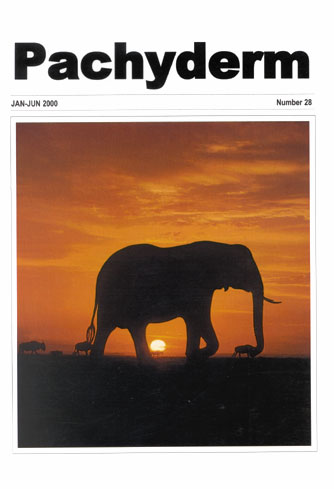Projects of the Human-Elephant Conflict Taskforce (HETF) - results and recommendations
Abstract
Notes the development recognition of the need for and the development of the Taskforce focused on human elephant conflict (HEC) - a 5 person group offically established by AfESG in 1997. During the first phase, yielded aN inventory of conflict sites, a bibliography of available literature, a list of priority topics for further investigation, and terms of reference for the Taskforce itself were compiled. The second phase continues to evolve around 3 activities: linking people with similar interests, acting as a catalyst in getting studies underway, and providing technical advice and expertise to range states. To date 8 studies under three categories have been completed: 4 under determination of significant factors in HEC, 3 under spatial analysis of HEC, and 1 under control of problem elephants. Elephants appear to attract a disproportionate level of complaintS - elephant raids are localised, unpredictable, and do cause more damage per raid than other pests, but are not the significant pest they are perceived to be. Human-elephant conflict in the forest ecosystem has not been as widely researched as that in the savannas, but this conflict may be a pretext for elephant poaching. Research and management recommendations are outlined.
Downloads
Published
How to Cite
Issue
Section
License
Copyright (c) 2000 Richard E. Hoare

This work is licensed under a Creative Commons Attribution-NonCommercial 4.0 International License.




